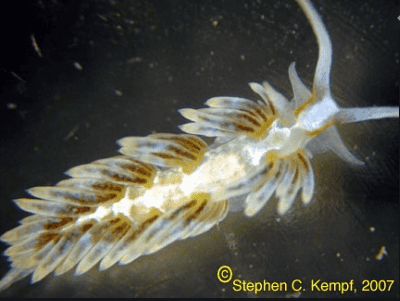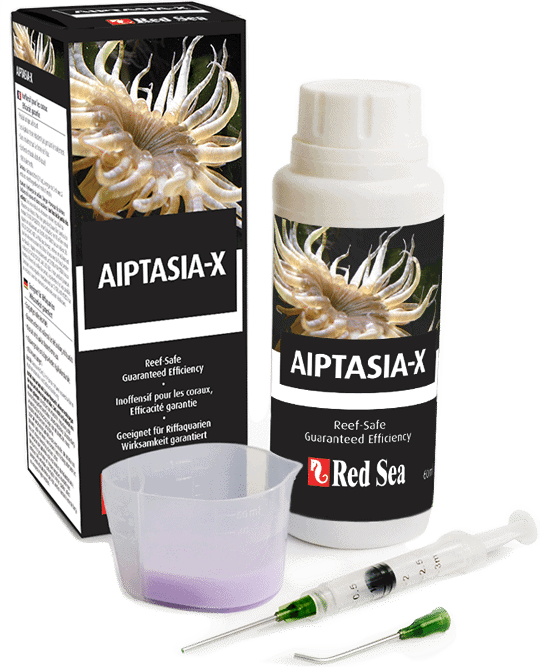How to control the Marine Reef Aquaria Pests Aiptasia pallida
(Written by: Anna Mariano)
It is well known that Aiptasia pallida are one of the most common pests found growing near precious zoanthids, euphyllia, acans, etc. It is quite easy for these anemones to infiltrate anyone’s tank; they can even be found on coral frags that you may have wanted to add to your aquarium! It is incredibly challenging to try to expel them as the conditions in a reef tank creates a perfect environment for A. pallida to thrive. Manual removal can cause the unintentional spread of glass anemones.

Photo: Tropical Fish Hobbyist Magazine, James Fatherree
A great product to use is Aiptasia-X by Red Sea.
Aiptasia-X can be injected into the oral disk; afterwards, the anemone will implode preventing it from spreading. This is a great way to safely remove A. pallida, as Aiptasia-X is reef safe and will not affect water chemistry. Aiptasia-X is the perfect solution for anemones that have grown near your corals like zoanthids and euphyllia.
It is beneficial to combine both chemical and biological removal of these pests as it is easy to miss smaller glass anemones.
One of the most popular invertebrates to add to home aquaria for the control of A. pallida is the peppermint shrimp (Lysmata sp.).
Many aquarists have found success through the addition of peppermint shrimp into their tanks. Peppermint shrimp are reef safe; however, they are also opportunistic feeders and may try to “steal” food from corals. Watch out if you find your shrimp picking food out of torches and hammers!
The Matted Filefish (Acreichthys tomentosus) has also been known to eat A. pallida.
Photo: www.absolutelyfishnaturals.com, Cedes Militante
The matted filefish is a great addition to a tank to rid it of Aiptasia. A downside is that some hobbyists report that matted filefish may nip at zoanthid colonies and LPS corals.
Another possible fish to control pest anemones in aquaria is the Copperband Butterfly (Chelmon rostratus).
Photo: www.absolutelyfishnaturals.com, Cedes Militante
Copperband butterflies are beautiful fish that can potentially assist in consuming A. pallida. In captivity, copperband butterflies are known to be finnicky eaters, making it difficult to keep them in home aquaria. There is also a risk of copperband butterflies nipping at other invertebrates such as tube worms, clams, other anemones, or fleshy coral polyps.
An effective invertebrate to use to consume A. pallida are Berghia nudibranchs (Berghia stephanieae).

These little nudibranchs are a peaceful invertebrate that will not harm any corals as they will only prey on A. pallida.
Glass anemones are a pain to get rid of in reef tanks, especially if they are growing on frag plugs or wedged themselves into a coral colony; but, the use of both chemical and biological methods can help keep these pests at bay!
Should you inquire about the livestock's and product exhibited in this blog? Contact us! We are happy to assist you.



